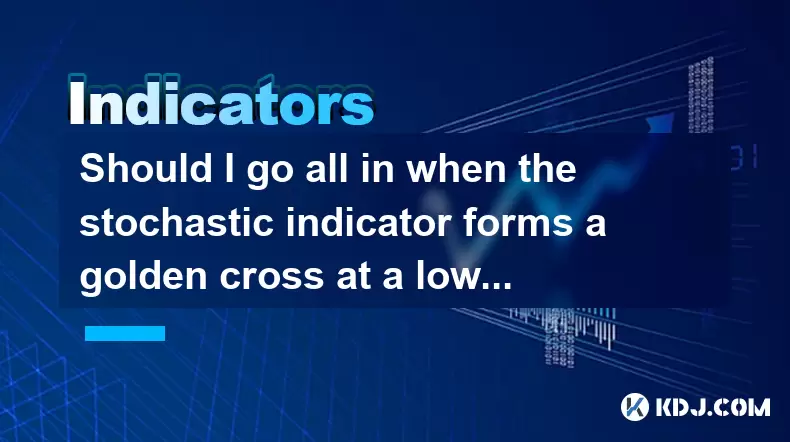-
 Bitcoin
Bitcoin $118000
-1.29% -
 Ethereum
Ethereum $3758
-3.52% -
 XRP
XRP $3.113
-5.04% -
 Tether USDt
Tether USDt $0.9998
-0.05% -
 BNB
BNB $818.5
-3.23% -
 Solana
Solana $181.9
-5.10% -
 USDC
USDC $0.9997
-0.04% -
 Dogecoin
Dogecoin $0.2239
-8.33% -
 TRON
TRON $0.3233
0.95% -
 Cardano
Cardano $0.7842
-6.81% -
 Hyperliquid
Hyperliquid $43.35
-2.12% -
 Sui
Sui $3.894
-9.97% -
 Stellar
Stellar $0.4176
-6.99% -
 Chainlink
Chainlink $17.97
-6.68% -
 Bitcoin Cash
Bitcoin Cash $576.7
-2.30% -
 Hedera
Hedera $0.2671
-7.23% -
 Avalanche
Avalanche $24.64
-6.12% -
 UNUS SED LEO
UNUS SED LEO $8.972
0.08% -
 Litecoin
Litecoin $108.1
-6.55% -
 Toncoin
Toncoin $3.198
-5.94% -
 Shiba Inu
Shiba Inu $0.00001325
-6.80% -
 Ethena USDe
Ethena USDe $1.001
-0.04% -
 Uniswap
Uniswap $10.27
-7.02% -
 Polkadot
Polkadot $3.935
-7.49% -
 Monero
Monero $317.7
-2.24% -
 Dai
Dai $0.9999
0.00% -
 Bitget Token
Bitget Token $4.550
-3.85% -
 Pepe
Pepe $0.00001179
-8.68% -
 Cronos
Cronos $0.1418
-2.34% -
 Aave
Aave $286.2
-6.49%
Should I go all in when the stochastic indicator forms a golden cross at a low level?
A stochastic golden cross below 20 may signal a bullish reversal, but always confirm with support levels, volume, and trend context to avoid false signals.
Jul 28, 2025 at 03:15 pm

Understanding the Stochastic Indicator and Golden Cross
The stochastic indicator is a momentum oscillator used in technical analysis to identify potential overbought or oversold conditions in the market. It consists of two lines: the %K line, which represents the current price momentum, and the %D line, a moving average of %K. When the %K line crosses above the %D line at a low level—typically below 20—this is referred to as a golden cross in the stochastic indicator. This formation is often interpreted as a bullish signal, suggesting that downward momentum is weakening and upward momentum may be building.
While this crossover can indicate a potential reversal, especially in a downtrend, it does not guarantee a sustained upward movement. Traders must consider the broader market context, including volume, trend direction, and confirmation from other indicators. Relying solely on the stochastic golden cross to make a high-risk decision such as going all in can lead to significant losses, particularly in volatile cryptocurrency markets where false signals are common.
Assessing Market Context Before Acting
Before making any trading decision, it is essential to evaluate the overall market structure. A golden cross at a low stochastic level might seem promising, but its reliability increases when aligned with other technical factors. For example, if the price is near a well-established support level or a key Fibonacci retracement zone, the signal gains more credibility.
- Confirm whether the cryptocurrency is in a downtrend or consolidation phase
- Check for confluence with horizontal support levels or trendline bounces
- Analyze volume patterns—rising volume on the reversal candle adds strength to the signal
- Examine higher timeframes (such as 4-hour or daily charts) to ensure alignment with larger trends
Ignoring these elements and going all in based purely on the stochastic crossover increases exposure to false breakouts and whipsaws, which are frequent in crypto due to its high volatility and susceptibility to manipulation.
Managing Risk When Using Stochastic Signals
Even when a stochastic golden cross occurs at a low level, risk management must remain the top priority. Going all in—allocating 100% of trading capital to a single position—is an extremely aggressive strategy that contradicts sound risk principles. Professional traders typically risk only a small percentage of their capital per trade, often between 1% and 5%.
To apply proper risk controls:
- Set a stop-loss order below the recent swing low or below the support level that coincides with the crossover
- Use a position sizing calculator to determine how much to invest based on your stop distance and risk tolerance
- Consider scaling in—entering a partial position at the initial signal and adding more if the price confirms upward momentum
- Avoid emotional decisions by predefining entry, stop-loss, and take-profit levels before placing the trade
The stochastic indicator alone does not provide enough information to justify an all-in approach. Combining it with price action analysis and volume confirmation improves the probability of success.
Backtesting the Stochastic Golden Cross Strategy
To determine whether acting on a stochastic golden cross at low levels is effective, traders should backtest the strategy across multiple cryptocurrencies and timeframes. This involves reviewing historical price data to see how often the signal led to profitable trades versus false signals.
Steps to conduct a proper backtest:
- Select a cryptocurrency pair such as BTC/USDT or ETH/USDT
- Apply the stochastic indicator with default settings (typically 14,3,3)
- Identify all instances where the %K line crossed above %D below the 20 level
- Record the price action over the next 5 to 20 candles—did the price rise by a meaningful amount?
- Calculate the win rate and risk-reward ratio of these signals
Many backtests reveal that while the stochastic golden cross can be useful, it produces a high number of losing trades in ranging or choppy markets. This further supports the idea that going all in is not advisable without additional confirmation.
Alternative Confirmation Tools to Strengthen the Signal
To increase the reliability of a stochastic golden cross, traders should integrate complementary indicators and price patterns. These tools help filter out weak signals and improve decision-making.
- Use moving averages—a bullish crossover may carry more weight if the price is above the 50-period or 200-period MA
- Monitor RSI (Relative Strength Index)—if RSI is also rising from below 30, it confirms strengthening momentum
- Look for bullish candlestick patterns such as hammer, engulfing, or morning star at the time of the crossover
- Incorporate volume analysis—a surge in buying volume during the crossover supports genuine interest
By combining multiple indicators, traders create a confluence of evidence that makes the trade setup more robust. This multi-layered approach reduces the temptation to go all in based on a single oscillator signal.
Frequently Asked Questions
What is the ideal setting for the stochastic indicator in crypto trading?
The default setting of 14,3,3 is widely used, but some traders adjust it to 5,3,3 for faster signals in highly volatile crypto markets. Shorter periods increase sensitivity but also raise the risk of false signals. Testing different settings on historical data helps determine the optimal configuration for a specific asset.
Can the stochastic golden cross work in sideways markets?
In ranging markets, the stochastic indicator frequently generates golden and death crosses due to price oscillation. These signals are often unreliable because there is no clear trend. Traders should avoid acting on stochastic crossovers without confirmation from support/resistance levels or breakout patterns.
Should I use the stochastic indicator on lower timeframes like 5-minute charts?
Yes, but with caution. Lower timeframes produce more signals, including noise and false entries. The stochastic golden cross on a 5-minute chart may work better when aligned with the direction of the 1-hour or 4-hour trend. Always use higher timeframe bias to filter lower timeframe signals.
How do I know if a stochastic signal is a false breakout?
A false breakout often occurs when the price briefly moves up after the golden cross but quickly reverses below the entry candle’s low. To identify this, monitor whether the next 2–3 candles fail to make higher highs and whether volume declines during the attempted rally. Using a tight stop-loss helps minimize losses in such cases.
Disclaimer:info@kdj.com
The information provided is not trading advice. kdj.com does not assume any responsibility for any investments made based on the information provided in this article. Cryptocurrencies are highly volatile and it is highly recommended that you invest with caution after thorough research!
If you believe that the content used on this website infringes your copyright, please contact us immediately (info@kdj.com) and we will delete it promptly.
- XRP Price Prediction: July 29th - Will XRP Break Free?
- 2025-07-29 15:30:12
- SEC, Truth Social, and Bitcoin ETFs: A New York Minute on Crypto Regulation
- 2025-07-29 15:10:12
- Bitcoin Treasury Titans: Decoding Strategy, BTC Purchases, and the MSTR Gamble
- 2025-07-29 15:10:12
- Ethereum, Dogecoin, and Little Pepe: A Crypto Trifecta for 2025?
- 2025-07-29 15:35:12
- LILPEPE vs DOGE: The Meme Coin Landscape in 2025
- 2025-07-29 15:40:13
- Dogecoin vs. Little Pepe: The Meme Coin Throne in 2025
- 2025-07-29 15:45:12
Related knowledge

What does it mean when the EMA combination crosses upward for the first time after sideways trading?
Jul 28,2025 at 03:43pm
Understanding the EMA and Its Role in Technical AnalysisThe Exponential Moving Average (EMA) is a widely used technical indicator in cryptocurrency tr...

What signal does the ROC send when it rises rapidly from a low level and breaks through the zero axis?
Jul 27,2025 at 10:15am
Understanding the Rate of Change (ROC) IndicatorThe Rate of Change (ROC) is a momentum-based oscillator used in technical analysis to measure the perc...

What does it mean when TEMA breaks through the long-term downward trend line?
Jul 29,2025 at 02:50pm
Understanding the Role of Smart Contracts in Decentralized Finance (DeFi)Smart contracts are self-executing agreements with the terms of the agreement...

What does it mean when the price breaks through the double bottom neckline and the moving averages are arranged in a bullish pattern?
Jul 28,2025 at 10:57am
Understanding the Double Bottom PatternThe double bottom is a widely recognized reversal chart pattern in technical analysis, particularly within the ...

What signal does the DMA fast line cross the slow line above the zero axis?
Jul 28,2025 at 05:42am
Understanding the DMA Indicator and Its ComponentsThe DMA (Difference of Moving Averages) indicator is a technical analysis tool used in cryptocurrenc...

What does it mean that the rebound is blocked after the moving average is arranged in a short position for the first time?
Jul 26,2025 at 10:51am
Understanding the Short-Term Moving Average ConfigurationWhen traders refer to a 'short position arrangement' in moving averages, they are describing ...

What does it mean when the EMA combination crosses upward for the first time after sideways trading?
Jul 28,2025 at 03:43pm
Understanding the EMA and Its Role in Technical AnalysisThe Exponential Moving Average (EMA) is a widely used technical indicator in cryptocurrency tr...

What signal does the ROC send when it rises rapidly from a low level and breaks through the zero axis?
Jul 27,2025 at 10:15am
Understanding the Rate of Change (ROC) IndicatorThe Rate of Change (ROC) is a momentum-based oscillator used in technical analysis to measure the perc...

What does it mean when TEMA breaks through the long-term downward trend line?
Jul 29,2025 at 02:50pm
Understanding the Role of Smart Contracts in Decentralized Finance (DeFi)Smart contracts are self-executing agreements with the terms of the agreement...

What does it mean when the price breaks through the double bottom neckline and the moving averages are arranged in a bullish pattern?
Jul 28,2025 at 10:57am
Understanding the Double Bottom PatternThe double bottom is a widely recognized reversal chart pattern in technical analysis, particularly within the ...

What signal does the DMA fast line cross the slow line above the zero axis?
Jul 28,2025 at 05:42am
Understanding the DMA Indicator and Its ComponentsThe DMA (Difference of Moving Averages) indicator is a technical analysis tool used in cryptocurrenc...

What does it mean that the rebound is blocked after the moving average is arranged in a short position for the first time?
Jul 26,2025 at 10:51am
Understanding the Short-Term Moving Average ConfigurationWhen traders refer to a 'short position arrangement' in moving averages, they are describing ...
See all articles

























































































